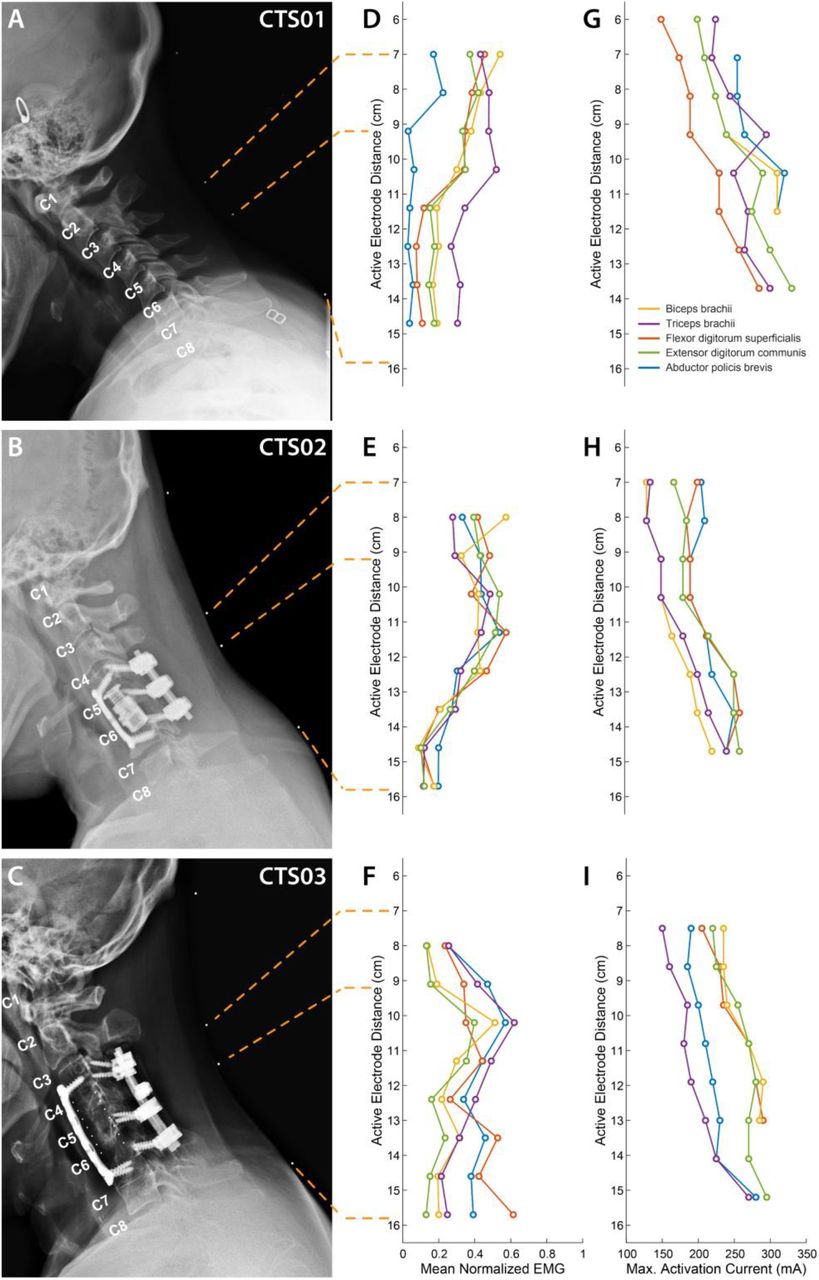Long-term recovery of control of the upper limb is an unmet need in people with paralysis.
Recently, it has been demonstrated that spinal cord stimulation, when paired with intense physical therapy, can restore conscious control of upper limb in spinal cord injury (SCI).
Epidural administration involves the placement of a catheter into the epidural space
Epidural stimulation of the spinal cord has traditionally been demonstrated to be highly effective in restoring movement, potentially due to the ability of targeted activation of specific motoneuron pools. Yet epidural administration is an invasive procedure.
 However, transcutaneous spinal cord stimulation (tSCS) has recently shown equally promising results partly because can offer the same benefits with a non-invasive procedure.
However, transcutaneous spinal cord stimulation (tSCS) has recently shown equally promising results partly because can offer the same benefits with a non-invasive procedure.
Transcutaneous spinal cord stimulation (tSCS), like epidural stimulation, exerts its neuromodulatory effect on motoneurons trans-synaptically via activation of large-to-medium size sensory afferent fibers.
In this study, the authors from Northwell Health, a nonprofit integrated healthcare network in New York State, used a custom designed electrode patch and stimulator to enable targeted stimulation of specific spinal segments.
Targeted transcutaneous stimulation of the cervical spinal cord was paired with minimal physical therapy in two individuals classified as having a motor complete SCI and one individual with a peripheral nerve injury.
 Stimulation was targeted to specific cervical levels using a custom electronically configurable electrode array, with each electrode having a small form factor (10 mm x 10 mm).
Stimulation was targeted to specific cervical levels using a custom electronically configurable electrode array, with each electrode having a small form factor (10 mm x 10 mm).
Modulating the spatial configuration of the stimulation electronically allowed the researchers to extensively map the recruitment profile of the upper-limb muscles based on the location of stimulation. This enabled them to choose the precise location of stimulation to achieve maximal recruitment of the muscle group of interest.
Even though participants received stimulation only once per week, the authors observed a rapid increase in both volitionally controlled muscle activity and force within a period of 5-6 weeks.
However, the observed gains were restricted to muscles that generated at least a measurable amount of force at the beginning of therapy.
In the subject with peripheral nerve injury leading to paralysis of the hand, the scientists observed rapid increase in functionality of the affected digits.
